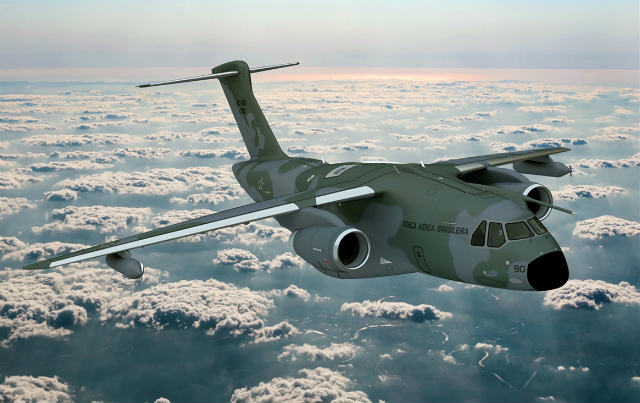Embraer is undertaking a critical design review (CDR) for its KC-390 tactical transport and tanker, a top company official says.
"We are doing this week and next week, the KC-390 critical design review with the [Brazilian] air force," says Paulo Gastao Silva, Embraer's programme vice president for the KC-390.
The review, which started on 4 March, should be completed by 22 March, he says.
Successfully completing the CDR is an important step for the programme because it clears the way for manufacturing drawings to be released to the factory floor, Gastao Silva says. "We will really start building the aircraft this year," he adds.
This will clear the way for the KC-390's first flight in the second half of 2014, he adds. The first aircraft are to be delivered in late 2015 or early 2016.
 |
|---|
Embraer |
Series production of the aircraft is expected to start in 2016, but Embraer also hopes to receive a final operational clearance for the KC-390 later that year. The Brazilian air force is funding the developmental work, and is the launch customer.
Gastao Silva says the aircraft is "on track" to meet its cost targets. In fact, there has been a slight drop in the projected development cost of the transport, which is powered by twin IAE V2500 turbofans, he says. The total development cost is expected to come in at between $2.3 billion to $2.4 billion.
While he will not say what the unit cost for the KC-390 will be, Gastao Silva claims the type will have the best lifecycle costs in its class.
Although Embraer had not originally intended the KC-390 to be a direct competitor to the Lockheed Martin C-130J, Gastao Silva says the Hercules is the Brazilian-built machine's main competitor.
"We never considered developing an aircraft to fight the C-130J on the market, we started with only an aircraft to respond to Brazilian air force requirements," he says. "We will, of course, compete against the C-130J."
More than half of the world's tactical transports are versions of the C-130, says Gastao Silva, who also claims that the Embraer design brings a host of modern technologies to the market that the C-130J cannot match.
The Brazilian aircraft will carry a 23t payload, which exceeds the roughly 21t carrying capability of the Lockheed-build machine. The KC-390, with its twin-turbofan design and fly-by-wire controls, is also much faster than the turboprop-powered C-130J, with a cruise speed of 465kt (860km/h). It also offers greater flexibility than the Hercules, Gastao Silva says.
The KC-390 offers advanced avionics in the form of Rockwell Collins Pro Line Fusion cockpit displays equipped with enhanced vision capability. The aircraft can also carry a Rafael Litening II electro-optical/infrared targeting pod for search and rescue missions. Additionally, the transport was designed from the ground up with a built-in aerial refuelling capability, to support both fixed-wing aircraft and helicopters.
Gastao Silva says the KC-390 is being designed specifically to operate from austere semi-prepared airstrips. The aircraft can make 10 passes on a fully unpaved runway before the landing strip is rendered useless, he adds.
Further development of the KC-390 might come in the form of a stretched variant. Embraer has already been in discussions with the Brazilian postal service and other potential customers about building a civilian cargo version with a longer fuselage, Gastao Silva says. However, the company is not currently proceeding with the development of a civilian variant at this time, he adds.
Currently, Embraer does not have any firm orders for the aircraft, but does have letters of intent to buy the jet from Brazil, Argentina, Chile, Colombia, the Czech Republic and Portugal for a total of 60 KC-390s.
Of this number, 28 aircraft would be for the Brazilian air force, but Embraer estimates that the medium-lift transport market is worth $50 billion over the next 10 to 15 years. That could mean a possible total of 700 orders.
Source: Flight International























